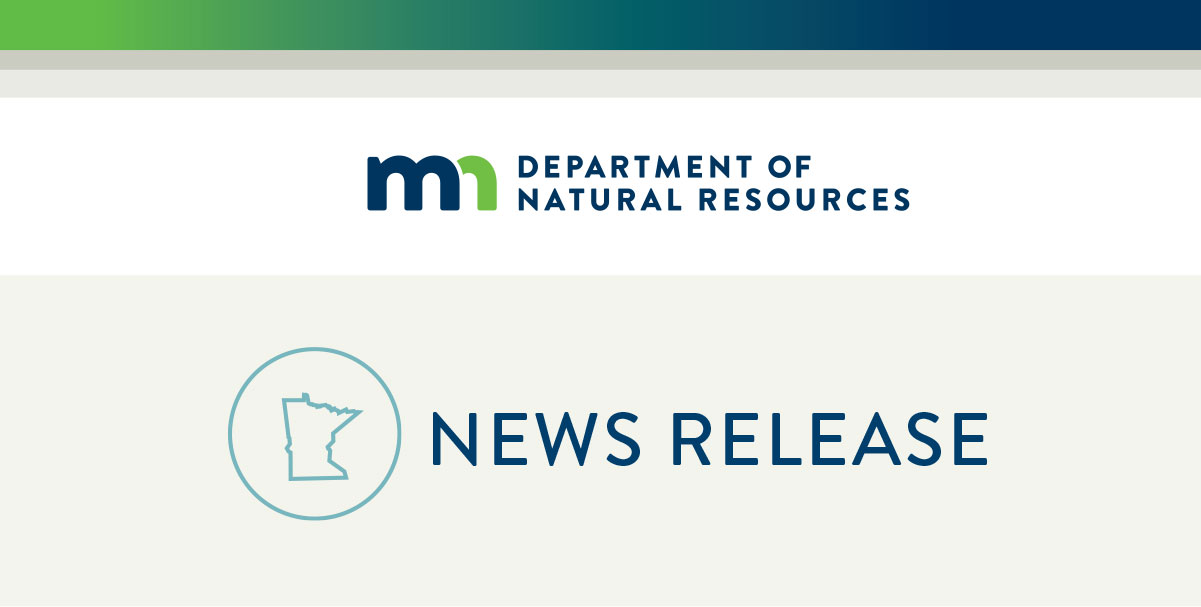Report on Minnesota’s Forest Products Industry and its Contribution to Sustainable Development Goals (SDGs)
Introduction: National Forest Products Week and Sustainable Development
In observance of National Forest Products Week, this report examines the critical connections between Minnesota’s consumers, its forest products industry, and the advancement of key United Nations Sustainable Development Goals (SDGs). The period of October 19-25 serves as an opportunity to assess how the state’s forestry sector contributes to a sustainable and resilient future through responsible management and production.
Advancing SDG 15 (Life on Land) and SDG 8 (Decent Work and Economic Growth) through Sustainable Forest Management
Minnesota’s forest products industry is a significant component of the state’s economy, directly supporting SDG 8: Decent Work and Economic Growth. Concurrently, the industry plays a pivotal role in achieving SDG 15: Life on Land by enabling sustainable forest management. Commercial timber harvesting, when conducted under stringent sustainability requirements, serves as an economic tool to meet critical forest management objectives. These objectives include:
- Balancing the age and species composition of forests to enhance biodiversity.
- Addressing large-scale forest health concerns, such as disease and invasive species.
- Improving the long-term ecological resilience of forest ecosystems.
As noted by Jeremy Fauskee, a Utilization and Marketing Program consultant for the DNR’s Forestry Division, “markets provide tools to help manage forests sustainably.”
The Impact of Consumer Behavior on SDG 12 (Responsible Consumption and Production)
Consumer purchasing decisions are a primary driver of market dynamics and are fundamental to achieving SDG 12: Responsible Consumption and Production. By selecting sustainably produced and locally sourced forest products, consumers actively participate in a system that supports both environmental health and economic stability. This conscious consumerism reinforces the demand for wood harvested in a manner that ensures the longevity and vitality of Minnesota’s forests for future generations.
Case Study: Emerald Ash Borer and Forest Resilience (SDG 15)
Minnesota faces a significant ecological threat from the emerald ash borer (EAB), an invasive insect that endangers the state’s estimated 1 billion ash trees. A market-based approach, driven by consumer demand, offers a viable strategy for mitigating this threat and enhancing forest biodiversity, directly contributing to SDG 15. The process is as follows:
- Increased consumer demand for products made from ash wood strengthens the market for this timber.
- This market demand incentivizes the commercial harvest of vulnerable ash trees, a key step in managing the EAB infestation.
- Harvesting allows for proactive reforestation efforts focused on planting a greater diversity of tree species.
- The resulting forest is more resilient to the impacts of EAB and other future threats, thereby protecting and restoring terrestrial ecosystems.
Promoting Sustainable Practices through Certification (SDG 12 & SDG 15)
To ensure that wood products originate from responsibly managed sources, consumers can look for third-party certifications. These voluntary programs provide verification that forestry practices meet high standards for ecological, economic, and social sustainability, aligning with the principles of both SDG 12 and SDG 15. Key certification systems include:
- Forest Stewardship Council (FSC)
- Sustainable Forestry Initiative (SFI)
The Minnesota Department of Natural Resources (DNR) demonstrates its commitment to these global standards through its dual certification by both FSC and SFI for its forest management practices.
Conclusion: A Collective Role in a Sustainable Future
The sustainable management of Minnesota’s forests is a shared responsibility that directly impacts global sustainability targets. During National Forest Products Week, it is evident that consumer choices to purchase local and certified wood products are a direct investment in the state’s economy and the health of its forest ecosystems. These actions help keep forests healthy and resilient, ensuring they continue to provide essential resources and environmental benefits in alignment with the Sustainable Development Goals.
1. SDGs Addressed in the Article
The article highlights issues and actions that are directly connected to several Sustainable Development Goals. The core themes of sustainable forest management, economic contributions of the forestry sector, responsible consumerism, and biodiversity protection link the article’s content to the following SDGs:
- SDG 15: Life on Land – This is the most prominent SDG, as the article’s central theme is the sustainable management of Minnesota’s forests, protecting biodiversity, and combating invasive species.
- SDG 12: Responsible Consumption and Production – The article explicitly calls on consumers to make thoughtful choices by purchasing locally sourced and sustainably produced forest products, directly addressing sustainable consumption patterns.
- SDG 8: Decent Work and Economic Growth – The text recognizes the forest products industry as an “important element of Minnesota’s economy” and links consumer demand for wood products to sustaining this economic sector.
2. Specific Targets Identified
Based on the article’s content, several specific targets under the identified SDGs can be pinpointed:
SDG 15: Life on Land
- Target 15.2: “By 2020, promote the implementation of sustainable management of all types of forests, halt deforestation, restore degraded forests and substantially increase afforestation and reforestation globally.” The article directly supports this target by discussing how commercial timber harvest, when done with “thoughtful planning and according to requirements designed to ensure long-term sustainability,” serves as a tool for sustainable forest management. It also mentions “reforestation with a greater diversity of tree species.”
- Target 15.5: “Take urgent and significant action to reduce the degradation of natural habitats, halt the loss of biodiversity and, by 2020, protect and prevent the extinction of threatened species.” The article connects consumer demand for ash products to efforts that “encourages biodiversity” and makes forests “more resilient,” thereby helping to prevent the large-scale loss of forest habitats due to invasive species.
- Target 15.8: “By 2020, introduce measures to prevent the introduction and significantly reduce the impact of invasive alien species on land and water ecosystems and control or eradicate the priority species.” The article specifically identifies the “devastating impacts of emerald ash borer, an invasive insect killing ash trees across the state,” and proposes using commercial timber harvests of ash as a management strategy to mitigate its impact.
SDG 12: Responsible Consumption and Production
- Target 12.2: “By 2030, achieve the sustainable management and efficient use of natural resources.” The article’s call for consumers to choose “sustainably produced, locally sourced forest products” is a direct appeal to promote the sustainable use of forest resources. The mention of third-party certification reinforces this goal.
SDG 8: Decent Work and Economic Growth
- Target 8.4: “Improve progressively, through 2030, global resource efficiency in consumption and production and endeavour to decouple economic growth from environmental degradation…” The article illustrates this by explaining how the forest products industry (economic growth) can be a partner in maintaining forest health (preventing environmental degradation). It states that consumer choices can sustain “both the economy and the environment.”
3. Indicators Mentioned or Implied
The article mentions or implies several indicators that could be used to measure progress towards the identified targets:
Indicators for SDG 15
- Indicator related to 15.2.1 (Progress towards sustainable forest management): The article explicitly mentions third-party certification systems like the “Forest Stewardship Council (FSC) and Sustainable Forestry Initiative (SFI).” The area of forest under such certified sustainable management plans is a direct and measurable indicator. The article notes that the “DNR’s forest management is dual-certified by FSC and SFI.”
- Indicator implied for Target 15.5: The article discusses “reforestation with a greater diversity of tree species” to make forests more resilient. An implied indicator would be the measurement of species diversity in managed and reforested areas, tracking the shift away from ash-dominated monocultures.
- Indicator implied for Target 15.8: The article focuses on managing the emerald ash borer. Progress could be measured by tracking the area of ash forest under active management plans or the rate of reforestation of these areas with diverse species to mitigate the insect’s impact.
Indicators for SDG 12
- Indicator implied for Target 12.2: The article encourages consumers to purchase local and certified wood products. An implied indicator would be the market share or sales volume of wood products that are certified by FSC or SFI and are sourced from within Minnesota. The DNR’s provision of a “map and database of Minnesota mills” is a tool to help track this.
Indicators for SDG 8
- Indicator implied for Target 8.4: The article describes the forest products industry as an “important element of Minnesota’s economy.” An implied indicator would be the economic value added by the sustainable forest products sector, demonstrating the successful link between economic activity and sustainable resource management.
4. Summary Table of SDGs, Targets, and Indicators
| SDGs | Targets | Indicators Identified in Article |
|---|---|---|
| SDG 15: Life on Land |
15.2: Promote sustainable management of all types of forests.
15.5: Halt biodiversity loss. 15.8: Reduce the impact of invasive alien species. |
Mentioned: Area of forest under third-party certification (FSC and SFI).
Implied: Measurement of tree species diversity in reforested areas. Implied: Area of forest managed to mitigate the impact of the emerald ash borer. |
| SDG 12: Responsible Consumption and Production | 12.2: Achieve the sustainable management and efficient use of natural resources. | Implied: Market share or sales volume of locally sourced and certified (FSC/SFI) wood products. |
| SDG 8: Decent Work and Economic Growth | 8.4: Decouple economic growth from environmental degradation. | Implied: Economic contribution (value added) of the sustainable forest products industry to Minnesota’s economy. |
Source: dnr.state.mn.us






